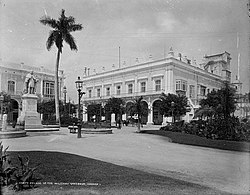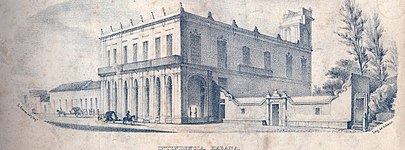| Palacio del Segundo Cabo | |
|---|---|
 Palacio del Segundo Cabo in 1904. | |
 | |
| General information | |
| Architectural style | Cuban baroque |
| Coordinates | 23°08′26″N82°21′00″W / 23.1405°N 82.3499°W |
| Completed | 1791 |
| Technical details | |
| Structural system | Load bearing |
| Material | coral stone |
| Floor count | 2 |
| Grounds | Plaza de Armas |
| Design and construction | |
| Architect(s) | Antonio Fernández de Trebejos y Zaldívar |
The Palacio del Segundo Cabo was built in the last decades of the 18th century, between 1770 and 1791, as part of the urban improvement project around the Plaza de Armas.


